expiredNavy-Wife | Staff posted Jun 18, 2022 10:43 PM
Item 1 of 9
Item 1 of 9
expiredNavy-Wife | Staff posted Jun 18, 2022 10:43 PM
ACOPOWER 12V Monocrystalline Solar Panel Module: 200W $133, 100W
+ Free Shipping$66
$180
63% offAmazon
Visit AmazonGood Deal
Bad Deal
Save
Share
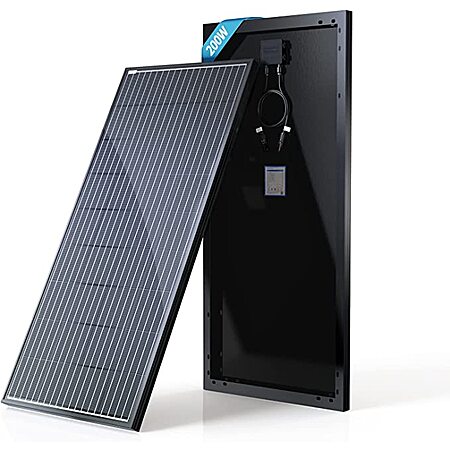
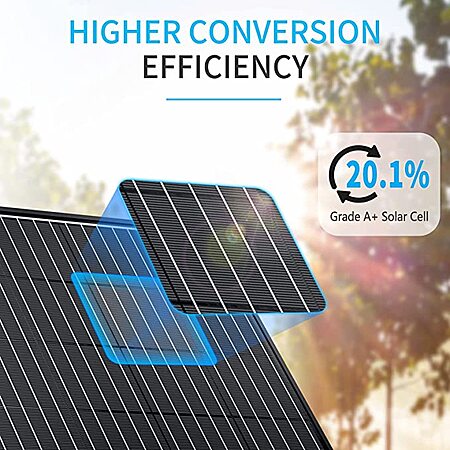
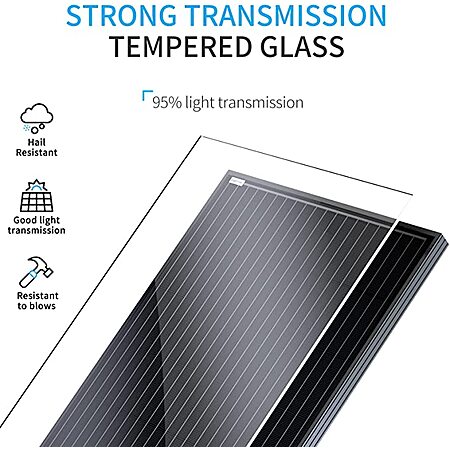
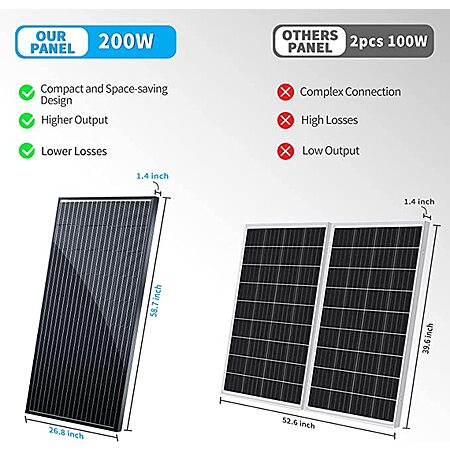
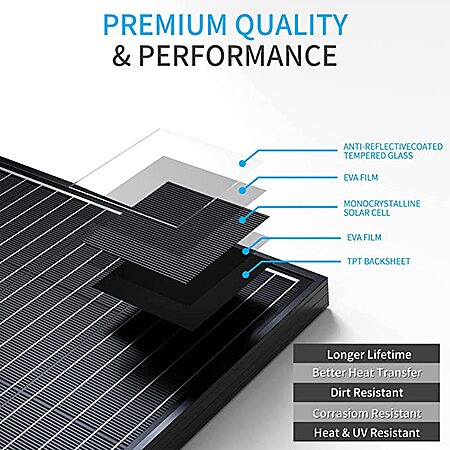
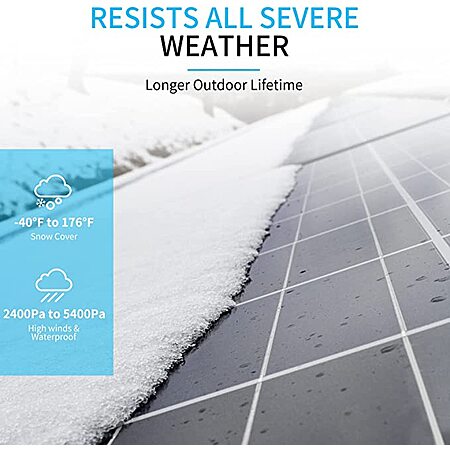
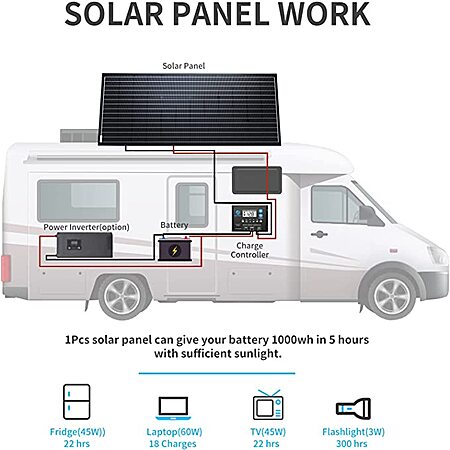
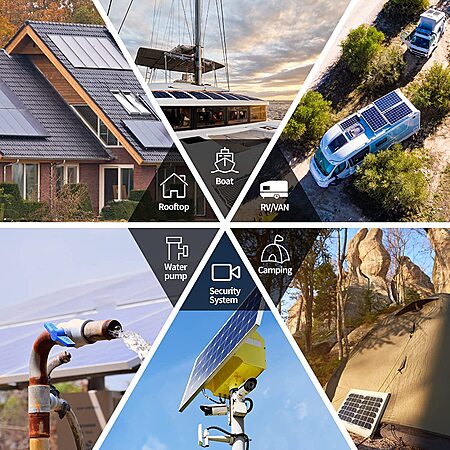
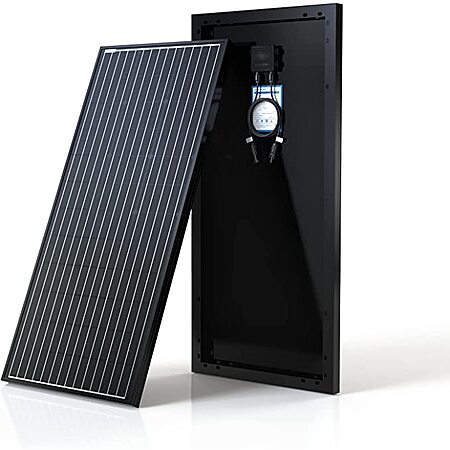



Leave a Comment
Top Comments
These size and wattage of solar panels are great for using with towable trailers, RVS, camping and pulling out of a garage or closet (along with a rechargeable battery or power station) to provide low wattage power in an emergency. They're small and compact enough easily pick up and carry outside or placed and mounted around vents, skylights and other areas that would be next to impossible to fit a full size solar panel.
If you want to build a dedicated solar array for your home these small portable panels are NOT a good choice. They have a higher cost per watt than other larger panels, need more hardware to mount on a rail system, can require more cabling work, and are just generally a lot more work to install.
Right now a good target for panels alone + shipping is about $0.45/watt. You can also buy them by the pallet to get even better deals and lower overall unit shipping costs. If you have a local supplier you can save yourself a significant amount of money by picking them up yourself.
I have posted and contributed to other solar panel threads, and I've included a few of the links below. If you go through the comments you might find some general useful information. 👍
1 https://slickdeals.net/f/15756952-acopower-100w-12v-compact-monocrystalline-solar-panel-module-panel-only-66-free-shipping
2 https://slickdeals.net/f/15806137-acopower-100w-12v-portable-monocrystalline-solar-panel-suitcase-w-waterproof-20a-charger-controller-2-kickstands-150-free-shipping
3 https://slickdeals.net/f/15837301-acopower-100w-12v-portable-monocrystalline-solar-panel-suitcase-w-waterproof-20a-charger-controller-2-kickstands-150-free-shipping
Otherwise for powering general equipment, typically one connects to a solar battery charging controller preferably with the MPPT feature.
That is a device which takes whatever the output of the solar panel is and uses the power to charge one or more batteries attached to the charger (the voltage and current taken out of the solar panel may vary; the MPPT feature of some chargers / charging controllers actively looks for the optimum voltage¤t load to get the most power out of the panel in any given time based on the light level etc. so the most power at the right voltage and current is always delivered to the battery for optimized charging).
So one could have several types of deep cycle type lead acid battery (flooded, sealed / AGM, gel cell) or a lithium iron phosphate type battery connected to the battery charger, and one can possibly use one or two or sometimes more such batteries connected in series depending on whether you want a roughly 12V voltage single battery system or a roughly 24V voltage dual battery system (two 12V batteries series connected), etc.
Then the battery / batteries are possibly / typically connected to another piece of equipment which is a DC to AC inverter which can generate 120VAC or 220/240VAC according to your model's type and the power voltage/frequency used in your location so you can power suitable devices typically powered by the AC mains grid by plugging them into the inverter instead when you are traveling off-grid (e.g. camping, RV, outdoors work site ) or have a particular location (shed, gate, outdoor equipment or whatever ) which needs constant power available day or night possibly from the batteries but which gets that power ultimately partly or wholly from the solar cells charging the batteries during the light hours. One can also have a setup that switches from AC mains grid power to battery backup / solar power depending on how much of which power source is available at a given time.
Anyway you don't HAVE to have an DC to AC inverter, and if you're powering things like USB-C powered chargers / devices (laptops, cell phones, tablets ...), low voltage DC LED lighting, DC powered equipment / security systems / tools / pump / whatever then maybe all you will need is low voltage DC power coming from the solar panel and/or the attached batteries.
Also of course you don't HAVE to have the attached batteries and battery charger, maybe you only need to power charging laptops / phones etc. or something that can deal with the power being available or intermittent day / night etc.
A common alternative to using the solar battery charger controller and batteries is an integrated 'power bank' type unit which includes in itself batteries, a charger for its batteries, maybe conversion to output some USB / USB-type-C ports to plug in other stuff to be powered / charged, maybe includes an DC to AC inverter to power AC mains plug in type equipment etc.
So basically the solar panel(s) generate as much power as they can and is drawn from them whenever there is some modest light on them (even overcast, cloudy but ideally sunny).
A battery or power bank system can store that energy for future use or to supply higher bursts of power if needed to augment / substitute what the solar panel(s) put out at any time.
A DC-to-AC inverter can output AC 120V or 220/240V to power plug in equipment if needed.
A DC input battery charger can be powered from solar panels or batteries input and used to charge / power other things like vehicle, laptop batteries, USB-type-C charging outputs, etc.
100w same price 50 days ago
https://slickdeals.net/share/android_app/fp/715918
Surely we have some people with experience?
105 Comments
Sign up for a Slickdeals account to remove this ad.
Our community has rated this post as helpful. If you agree, why not thank sarcasmogratis
100w same price 50 days ago
https://slickdeals.net/share/android_app/fp/715918
Surely we have some people with experience?
Our community has rated this post as helpful. If you agree, why not thank Gameross
Sign up for a Slickdeals account to remove this ad.
I do prefer the stealthy black paint on these, even though cheaply painted which the paint can be easily scratched off. I tested the 100w model vs the Renogy 100w compact one ( which is slightly larger) w/ a multimeter on a sunny breezy afternoon, the Acopower produced ~4.5 amps vs Renogy 's 5.5 amps. I resold it cuz of the lesser amps & it's not precise mount fitment in my specific case.
Our community has rated this post as helpful. If you agree, why not thank QuixoticOne
Otherwise for powering general equipment, typically one connects to a solar battery charging controller preferably with the MPPT feature.
That is a device which takes whatever the output of the solar panel is and uses the power to charge one or more batteries attached to the charger (the voltage and current taken out of the solar panel may vary; the MPPT feature of some chargers / charging controllers actively looks for the optimum voltage¤t load to get the most power out of the panel in any given time based on the light level etc. so the most power at the right voltage and current is always delivered to the battery for optimized charging).
So one could have several types of deep cycle type lead acid battery (flooded, sealed / AGM, gel cell) or a lithium iron phosphate type battery connected to the battery charger, and one can possibly use one or two or sometimes more such batteries connected in series depending on whether you want a roughly 12V voltage single battery system or a roughly 24V voltage dual battery system (two 12V batteries series connected), etc.
Then the battery / batteries are possibly / typically connected to another piece of equipment which is a DC to AC inverter which can generate 120VAC or 220/240VAC according to your model's type and the power voltage/frequency used in your location so you can power suitable devices typically powered by the AC mains grid by plugging them into the inverter instead when you are traveling off-grid (e.g. camping, RV, outdoors work site ) or have a particular location (shed, gate, outdoor equipment or whatever ) which needs constant power available day or night possibly from the batteries but which gets that power ultimately partly or wholly from the solar cells charging the batteries during the light hours. One can also have a setup that switches from AC mains grid power to battery backup / solar power depending on how much of which power source is available at a given time.
Anyway you don't HAVE to have an DC to AC inverter, and if you're powering things like USB-C powered chargers / devices (laptops, cell phones, tablets ...), low voltage DC LED lighting, DC powered equipment / security systems / tools / pump / whatever then maybe all you will need is low voltage DC power coming from the solar panel and/or the attached batteries.
Also of course you don't HAVE to have the attached batteries and battery charger, maybe you only need to power charging laptops / phones etc. or something that can deal with the power being available or intermittent day / night etc.
A common alternative to using the solar battery charger controller and batteries is an integrated 'power bank' type unit which includes in itself batteries, a charger for its batteries, maybe conversion to output some USB / USB-type-C ports to plug in other stuff to be powered / charged, maybe includes an DC to AC inverter to power AC mains plug in type equipment etc.
So basically the solar panel(s) generate as much power as they can and is drawn from them whenever there is some modest light on them (even overcast, cloudy but ideally sunny).
A battery or power bank system can store that energy for future use or to supply higher bursts of power if needed to augment / substitute what the solar panel(s) put out at any time.
A DC-to-AC inverter can output AC 120V or 220/240V to power plug in equipment if needed.
A DC input battery charger can be powered from solar panels or batteries input and used to charge / power other things like vehicle, laptop batteries, USB-type-C charging outputs, etc.
Our community has rated this post as helpful. If you agree, why not thank QuixoticOne
voltage to a voltmeter for a quick test. But I haven't deployed the panel or load tested it due to waiting for
other parts to complete the system equipment enabling their use.
As with anything else just be careful to inspect the box carefully for punctured / torn / crushed areas and then inspect
the panel inside for any significant gouges / cracks / significant defects since obviously shipping can be rough on anything and these are basically big sheets of reinforced glass / plastic / crystal in a metal frame that can be damaged if poked / kicked intensely enough.
There's the cardboard box, two interior layers of resiliant EPP or some such foam about 1/4 inch thick (one front and our rear of the panel), some strips of similar foam around/along the sides,
So packed well enough to survive decently careful handling / shipping but it'd be done if someone walked on it, slammed it facewise into something pokey, etc.
There are probably higher rated panels / manufacturers but for what it is / does if it works as advertised this seems a good option to me for many uses where one wants up to a few hundred peak watts of power inexpensively in a DIY
system / application like RVs, boats, powering a shed or remote / field equipment, camping, etc.
Getting bigger / different panels is probably the right call if you're looking to build a 5000 Watt system or something on that kilowatts scale to cover your home roof top or something for a big installation.
But given the availability of low voltage DC LED lighting, laptop / phone charging, etc. even just a panel like these could
be helpful for enough grid independent power to help sustain the ability to work, communicate, and keep stuff charged during a black out or something like that.
100w same price 50 days ago
https://slickdeals.net/share/android_app/fp/715918
Surely we have some people with experience?
Our community has rated this post as helpful. If you agree, why not thank OmahaJeff
100w same price 50 days ago
https://slickdeals.net/share/android_app/fp/715918
Surely we have some people with experience?
These size and wattage of solar panels are great for using with towable trailers, RVS, camping and pulling out of a garage or closet (along with a rechargeable battery or power station) to provide low wattage power in an emergency. They're small and compact enough easily pick up and carry outside or placed and mounted around vents, skylights and other areas that would be next to impossible to fit a full size solar panel.
If you want to build a dedicated solar array for your home these small portable panels are NOT a good choice. They have a higher cost per watt than other larger panels, need more hardware to mount on a rail system, can require more cabling work, and are just generally a lot more work to install.
Right now a good target for panels alone + shipping is about $0.45/watt. You can also buy them by the pallet to get even better deals and lower overall unit shipping costs. If you have a local supplier you can save yourself a significant amount of money by picking them up yourself.
I have posted and contributed to other solar panel threads, and I've included a few of the links below. If you go through the comments you might find some general useful information. 👍
1 https://slickdeals.net/f/15756952-acopower-100w-12v-compact-monocrystalline-solar-panel-module-panel-only-66-free-shipping
2 https://slickdeals.net/f/15806137-acopower-100w-12v-portable-monocrystalline-solar-panel-suitcase-w-waterproof-20a-charger-controller-2-kickstands-150-free-shipping
3 https://slickdeals.net/f/15837301-acopower-100w-12v-portable-monocrystalline-solar-panel-suitcase-w-waterproof-20a-charger-controller-2-kickstands-150-free-shipping
Our community has rated this post as helpful. If you agree, why not thank OmahaJeff
I do prefer the stealthy black paint on these, even though cheaply painted which the paint can be easily scratched off. I tested the 100w model vs the Renogy 100w compact one ( which is slightly larger) w/ a multimeter on a sunny breezy afternoon, the Acopower produced ~4.5 amps vs Renogy 's 5.5 amps. I resold it cuz of the lesser amps & it's not precise mount fitment in my specific case.
The ACOPOWER could have been producing 4.5 amps at 14.7v for 66watts
And the RENOLOGY could have been producing 5.5 amps at 12v for the same 66 watts.
The difference in electrical characteristics between solar panels is exactly the reason why you don't want to connect dissimilar panels together, regardless of their listed wattage. Doing so can dramatically limit the efficiency of your entire solar array and potentially damage your solar panels.
Sign up for a Slickdeals account to remove this ad.
Electrically:
The brand / model itself doesn't per. se. matter, but you have to be mindful of the voltage and current and way you interconnect them --
* the Acopower 12V 100W rated panels will have extremely comparable voltage and current output as the Renogy 12V 100W panels
* the Acopower 12V 200W rated panels will have a similar 12V range voltage as the Renogy 100W panels, but of course a 12V 200W panel could possibly put out up to twice the current as a 12V 100W panel in the same lighting conditions.
* When you use multiple panels together electrically you can use them either 1: totally independently, 2: connected all in series, or 3: connected all in parallel.
* If you connect the panels to totall different loads then there is no compatibility concern other than the panel current / voltage / power rating being supported by and a good match for the thing you connect each panel to independently.
* When you connect a single panel to a single load then just follow the instructions on the equipment you are connecting the panel to as to it being suitable to use with a panel of that voltage / current / power rating.
* If you have more than one panel with the same rated voltage and wattage (the wattage also determines the current if the voltages are the same) then you have matched voltage but more importantly in this case you have matched power and current from each panel that also happens to be rated for the same voltage. So in this case it could be fine to connect the panels in series since they have matching voltage & power & therefore current ratings (e.g. all 12V 100W regardless of manufacturer / model). The result in this case would be "12V" + "12V" = "24V" (more or less) voltage output of the series string of panels and the available current being around the same as the current either / both panels could allow to flow independently; the somewhat lesser one shouldn't limit the somewhat greater one since they're approximately the same characteristic of panel. The load equipment you connect should be compatible to handle a 24V range input voltage (the voltage of the sum of the panels in series connection) and ideally can use up to around the approximate 6A range these panels can put out.
* If you have more than one panel with the same rated voltage and wattage (and therefore the same general current) you could also connect them in a parallel combination to get more power delivered at the same voltage because the currents from each panel can add together going into the load. In this case with two 12V/100W panels in parallel your load equipment should be suited to handle a 12V/200W (and therefore up to 17 Ampere) connection from the parallel connected panels.
So a lot of panel driven equipment may be compatible with the use of either two roughly similar panels connected in series, or two roughly similar panels connected in parallel to one set of input terminals on that load equipment.
In the case your load can't handle up to the maximum approximate 200W of power from two 100W panels connected then of course it'll possibly still work but you may not be taking full advantage of the power available from the
multiple panels in the peak circumstances. Some equipment may be OK with the two-series-panel higher voltage, some may be OK with the two-parallel panel higher current, and some can often handle either possibility fine.
Two parallel connected 12V 100W panels is "approximately" equivalent to a single 12V 200W panel electrically though of course as they say with some added complexity of cabling and less space efficiency.
Electrically you'll be dealing with effectively the same general kind of MC4 connectors if I understand these panels' specifications correctly. Renogy has their own brand of MC4 generic type connector, Acopower may use something that is generically compatible with MC4 but maybe slightly different in form in non-critical ways. So you'd use compatible type of MC4 cables / wiring to deal with both Renogy and Acopower panels.
If you are going to DIY crimp fully custom length / made cabling note there could be some variation of things like the prong spacing on the little plastic wrench tool you're supposed to use to tighten the tail to the connector body when you're making your own MC4 cables by crimping wires to connectors so the exact plastic "wrench" tool and connector assembly / crimping could vary a bit depending on whether you use Renogy vs. Amphenol vs. someone else's generically MC4-compatible connector brand if you're literally crimping your own cables from the shells, pins, connector bodies, etc. If you're just buying pre-made MC4 cables then in theory it should be fine and compatible with any other MC4-compatible connector on any panel.
Mechanically though:
The Acopower and Renogy 12V/100W panels may not have identical mounting frame lengths / widths / thicknesses and mounting hole sizes / locations. Please check the specifications. Generally you're going to somehow use a couple of brackets to bolt each panel to a supporting frame rail or mounting point on whatever you're mounting them to.
Because of the mounting frames already on the panels it's simple / straightforward to do of course but if you mix two panel types just be prepared to use slightly different mounting spacings or brackets or whatever for each panel that may be mechanically a little different.
So for using just a couple / few panels for a shed or RV or boat or portable DIY power or something you shouldn't face particular problems mixing and matching roughly similar panels.
If you're going to use a bunch of panels to assemble a large system I'd give a little more thought to using panels that are more closely mechanically matched and such just to have a more uniform installation design / process etc. but it's not a big deal, it can be done.
Leave a Comment